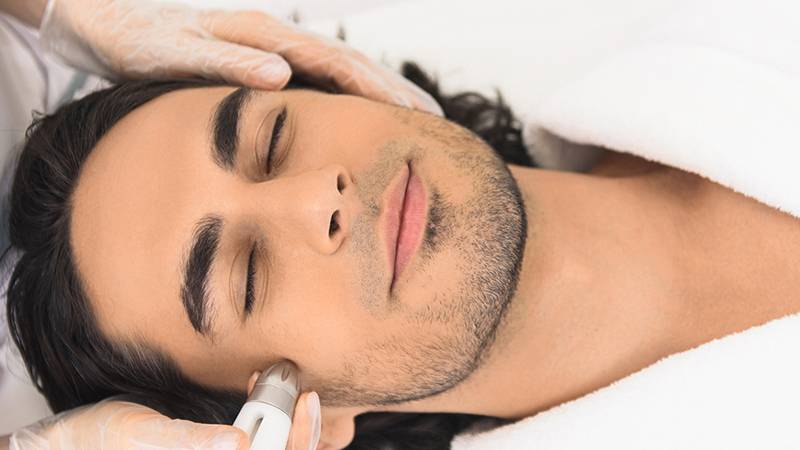Precuations During Laser Treatment
PATIENT INSTRUCTIONS : PRE TREATMENT
The effectiveness of laser hair removal is highly dependent on patient cooperation. There are many things a patient can inadvertently do to decrease either the safety or effectiveness of their treatment. It is, therefore, imperative to follow directions by the provider.
Tanning is one of the biggest factors. Most practitioners believe it is the single most important act that patients do to decrease the effectiveness of their treatment. Although a practitioner may advertise for and even have a laser that is able to treat tanned individuals, the laser may not always be the ideal laser for an individual’s hair type. These lasers usually have a longer wavelength and are much better at treating coarse hair than fine hair. If the practitioner has evaluated the area and decided the best laser to use would be one where tanning should be avoided, this is usually much heeded advice. Tanning should be avoided for 4-6 weeks prior to treatment if one of these lasers is to be used. Self-tanning creams and sprays need to completely fade also. During the course of treatment, if a patient is exposed to sun, sunscreen with an SPF of at least 30 applied as a thick layer 20 minutes before sun exposure is recommended.
The hair needs to be in the follicle at the time of treatment. Lasers target the pigment melanin in the hair beneath the surface of the skin. Because of this, patients should not wax, tweeze, bleach, thread, or use depilatory agents for 4 weeks prior to treatment. If facial hair is being treated, usually avoidance of these methods for only 2 weeks is necessary because facial hair grows faster. If a form of hair removal is necessary, shaving or clipping can be done because these methods allow the hair to stay in the follicle. It is usually advisable to see some hair growth on the day of treatment.
Lotions, creams, makeup, and deodorant are removed before treatment as well. These can obstruct or refract laser light negatively.
Patient cooperation is essential for the success of laser hair removal. Patients need to follow explicit directions with regards to tanning, other hair removal methods, and topical agents.
PATIENT INSTRUCTIONS: POST TREATMENT
Immediately after treatment, there should be mild redness and swelling at the Although pre-treatment instructions are probably more important for a patient to follow in order to ensure safe and effective results, most patients concern themselves more with post-treatment care. Below is a list of post-treatment instructions.
- Immediately after treatment, there should be mild redness and swelling at the treatment site, which may last up to 2 hours or longer. The redness may last up to 2-3 days. The treated area will feel like a sunburn. Apply ice in 15-20 minute intervals for first few hours after treatment to reduce any discomfort or swelling. If redness or swelling persists, ice can be continued in 15 minute intervals 3-4 times a day for 3 days.
- Makeup may be used immediately after the treatment unless there is blistering.
- Avoid sun exposure until skin has returned to its normal baseline (no redness or swelling).
- Avoid picking or scratching the treated skin. Do not use any other hair removal treatment products or services (waxing, electrolysis or tweezing) that will disturb the hair follicle in the treatment area.
- Wash the treated area and pat dry for 3 days after treatment. Do not scrub.
- Start gently scrubbing treated area on the 4th day (ex-foliate).
- Anywhere from 5-20 days after the treatment, shedding of the surface hair may occur and this appears as new hair growth. This is not new hair growth.
- At 1 week post treatment, attempt to pull hairs out gently. If the hair comes out, as if unattached to the skin, proceed to pull out the hairs. Otherwise, wait 2 to 3 days and try again for up to 3 weeks.
- For 2 to 3 weeks after treatment, ideally avoid shaving the shedding hair, although if absolutely necessary, gently touch hair with razor. Shaving can be performed on newly growing hair.
- After the underarms are treated, ideally use a powder instead of deodorant for 24 hours after the treatment to reduce skin irritation.
- There are no restrictions on bathing except to treat the skin gently, as if you had a sunburn, for the first 24 hours.
- Use post-laser lotion (if available) twice a day for 3 days.
At the next visit, it is important for the patient to let the practitioner know how long the redness lasted after treatment and when significant hair growth was noticed in the area. This info will allow the practitioner to individualize treatments to achieve the optimum results.
